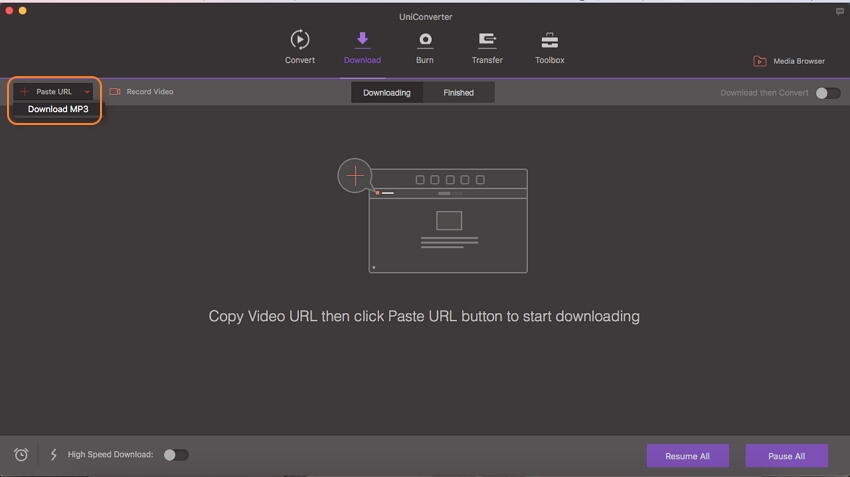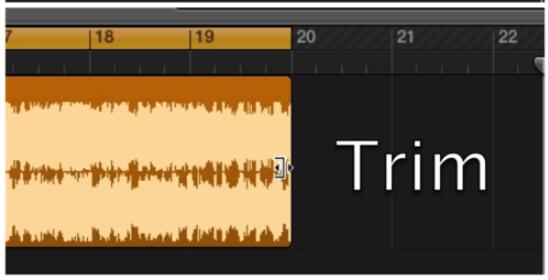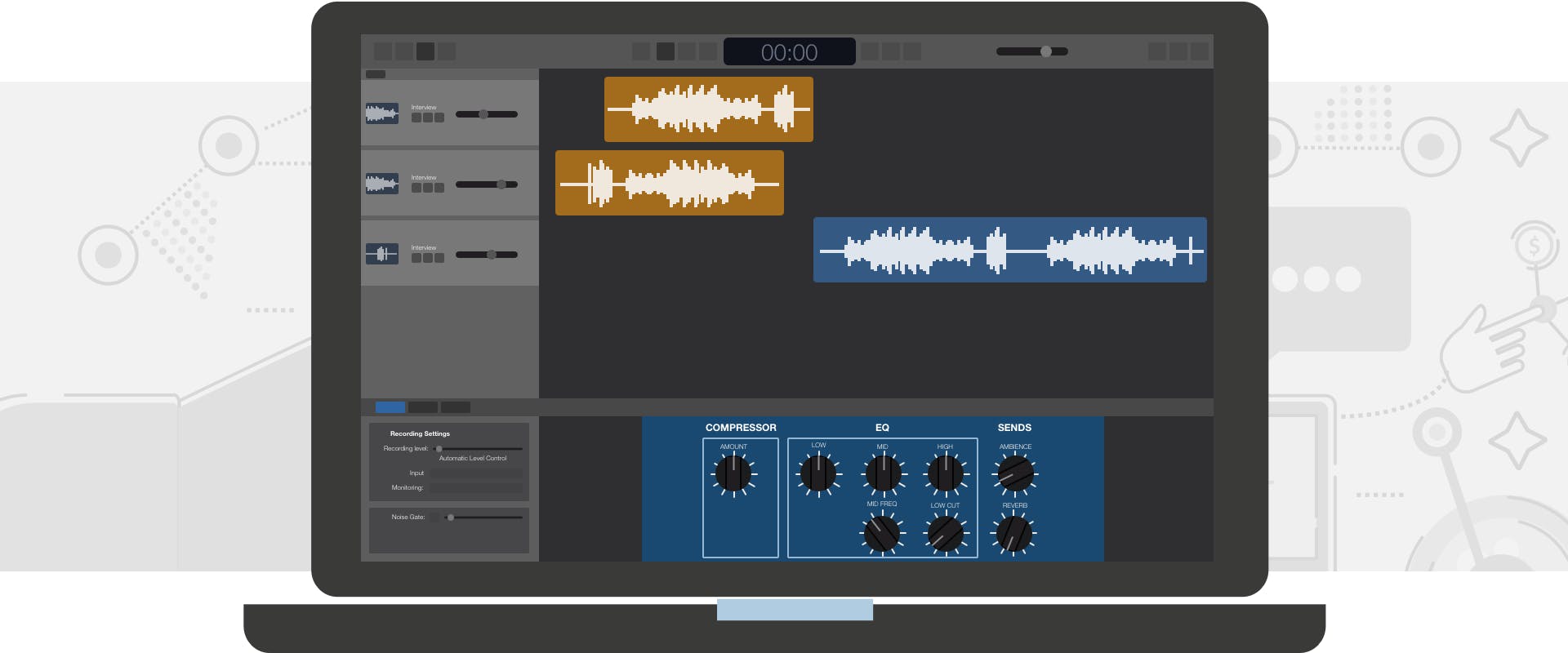2020. 8. 31. 00:57ㆍ카테고리 없음
GarageBand User Guide for iPhone
- How To Import Youtube Audio Into Garageband Mac Software
- How To Import Youtube Audio Into Garageband Mac Free
- Youtube Audio Library Sound Effects
You can import songs from the Music app on your iPhone into Tracks view. You can import a song to an existing Audio Recorder or Amp track, or have GarageBand create a new Audio Recorder track for the song.
Open the Google Drive app on your iPad. Locate the audio file you want to import into GarageBand. Tap the vertical 3 dots that appear next to the file name and choose Send A Copy. Wait while the file exports. Then tap the Add To iCloud Drive option.
Songs imported from the Music app do not follow tempo changes you make in GarageBand.
Import a song from the Music app
-
To import the entire song, set the current song section to Automatic; otherwise, only the portion of the song that fits the current song section is imported.
-
To get a list of tracks, tap the Tracks View button .
-
Tap the Loop Browser button in the control bar, then tap Music.
-
You can search for songs by name, or browse by album, artist, genre, or playlist.
-
To preview a song, tap it in the list. You can control the preview volume with the slider at the bottom of the list.
-
Drag a song left or right to show Tracks view. Align the left edge of the song with the bar or beat on the ruler where you want it to start playing.
How To Import Youtube Audio Into Garageband Mac Software
After importing the song, you can make the song section longer, then resize the imported region so that more of the song plays.
GarageBand User Guide for iPad

You can import audio and MIDI files from your computer and use them in your GarageBand song. You can add:
-
Audio files to an existing Audio Recorder or Amp track
-
MIDI files to an existing Keyboard or Drums track
-
Audio or MIDI files to new tracks
-
Audio or MIDI files to your song from iCloud Drive or your iPad using the Files app
When you import an audio file, it’s converted to a 44.1 kHz sample rate, 16-bit depth format if the original format is different. Imported audio files don’t follow tempo changes you make in GarageBand.

When you import a multitrack MIDI file, GarageBand creates a new Keyboard track for each track in the MIDI file. The total number of resulting tracks cannot exceed 32 tracks. You cannot add multitrack MIDI files to cells in Live Loops.
Import audio and MIDI files from your computer
-
On your computer, add the audio or MIDI files you want to import to the GarageBand File Sharing area in the Finder.
-
In GarageBand on your iPad, set the current song section to Automatic to import the entire audio or MIDI file; otherwise, only the portion of the file that fits the current song section is imported.
After importing the audio or MIDI file, you can make the song section longer, then resize the region so more of it plays.
-
Tap the Tracks View button to open Tracks view, then tap the Loop Browser button in the control bar.
A message appears asking if you want to move the audio or MIDI files to the GarageBand File Transfer folder.
-
Tap Move Files.
The files are moved to the GarageBand File Transfer folder.
-
To preview an audio file, tap it in the list. You can control the preview volume with the slider at the bottom of the list.
-
Drag an audio or MIDI file from the list to Tracks view. Align the left edge of the file with the bar or beat (on the ruler) where you want it to start playing.
A new region created from the audio or MIDI file is trimmed to the end of the current song section, unless the current song section is set to Automatic. You can make the song section longer or slow down the tempo, then resize the region so that more of it plays.
How To Import Youtube Audio Into Garageband Mac Free
Import audio and MIDI files with the Files app
-
Set the current song section to Automatic to import the entire audio or MIDI file; otherwise, only the portion of the file that fits the current song section is imported.
After importing the file, you can make the song section longer, then resize the region so that more of it plays.
-
Tap the Tracks View button to open Tracks view, tap the Loop Browser button in the control bar, then tap Files.
-
Tap “Browse items from the Files app,” then locate and tap an audio or MIDI file to import it.
-
To preview an audio file, tap it in the list. You can control the preview volume with the slider at the bottom of the list.
-
Drag an audio or MIDI file from the list to Tracks view. Align the left edge of the file with the bar or beat (on the ruler) where you want it to start playing.
A new region created from the audio or MIDI file is trimmed to the end of the current song section, unless the current song section is set to Automatic. You can make the song section longer or slow down the tempo, then resize the region so that more of it plays.
Youtube Audio Library Sound Effects

Import audio and MIDI files using Slide Over
-
Set the current song section to Automatic to import the entire audio or MIDI file; otherwise, only the portion of the file that fits the current song section is imported.
After importing the file, you can make the song section longer, then resize the region so that more of it plays.
-
Swipe up twice from the bottom edge of the screen.
The Dock appears.
-
In the Dock, touch and hold the Files app, drag it towards the upper-right corner of the screen, then let go.
A Slide Over window opens.
-
Locate the audio or MIDI file you want to import. If the file is in iCloud Drive, tap the Download button to download it before importing.
-
Touch and hold the file, then drag it from the Slide Over window to Tracks view. Align the left edge of the file with the bar or beat (on the ruler) where you want it to start playing.
A new region created from the audio or MIDI file is trimmed to the end of the current song section, unless the current song section is set to Automatic. You can make the song section longer or slow down the tempo, then resize the region so that more of it plays.